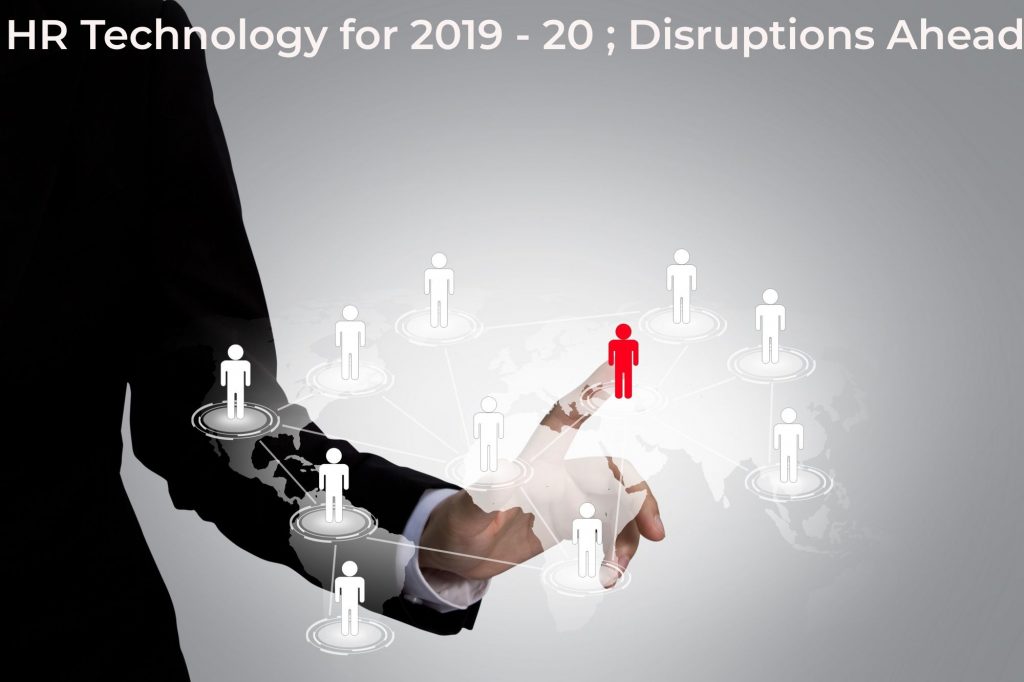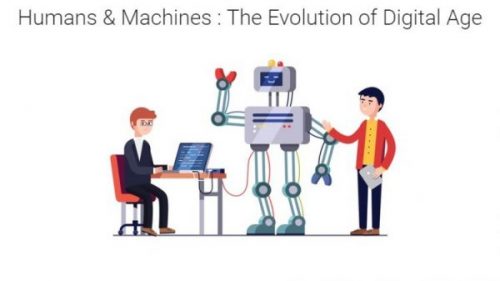Employee Experience and Employee Engagement – Relation and Difference
If you’ve taken a look at the new LinkedIn Global Talent Trends report, you’ve seen that employee experience is becoming increasingly influential in the workplace. Approximately 96% of the talent professionals surveyed for the study said employee experience is very important in shaping the future of HR and recruiting.
“Companies are beginning to work for employees, not just the other way around,” the report concludes. “HR teams are going all in on employee experience to improve retention and employer brand. Beyond collecting feedback, companies need to actively collaborate with employees to create an experience that works for everyone.”
Indeed employee experience is top of mind for the HR tech industry and people leaders across sectors—so much so that we’re starting to hear the two terms being used interchangeably.
The truth is a bit more nuanced. Employee experience and employee engagement aren’t the same thing—but they are related, and we think it’s important to understand how.
How are employee experience and employee engagement related?
Before we make distinctions between the two terms, let’s first establish definitions.
Employee experience (EX) is everything an employee observes, feels and interacts with as a part of their organization.
Employee engagement (EE) is the degree to which employees invest their cognitive, emotional, and behavioral energies toward positive organizational outcomes.
So how are they related? The most straightforward way to state it is that employee engagement is influenced by the employee experience. In other words, an employee who has a positive experience at work is generally more likely to be engaged than an employee who has a neutral or negative experience.
Employee experience and employee engagement from an employee’s point of view
To illustrate the relationship between EX and EE, consider the hypothetical story of Arpit, a sales director at AAA Corporation.
Arpit loves his company, his team, and the product he sells. By all observations, Arpit has high potential. He has earned relatively quick promotions; he is tapped for the most exciting projects and accounts; and he is given the opportunity to participate in high-profile development opportunities.
In his personal life, Arpit has a big change coming up. He and his partner are expecting their first child. They live far from the office, so Arpit approaches his manager to propose some form of flexible or remote work. His manager refers him to the HR team.
The HR team quickly declines the arrangement, saying, “If we do this for you, we have to do it for everyone.”
Arpit feels like his commitment and passion for the organization is not recognized in return. Despite that passion, he decides to leave the company.
Arpit’s story is one we hear all too often, and it’s a great example of how EX and EE intersect. We see in Arpit that he felt like his organization wasn’t meeting his most basic needs. As a result, it’s impossible for Arpit to focus on giving his all for the organization.
Arpit’s situation is a painful illustration of how EE is influenced by EX.
How HR leaders can balance employee experience and employee engagement
So what does this mean for an HR leader like you?
In Arpit’s case, the organization learned the hard lesson that employee experience is not one-size-fits-all. There were two failures in his story. First, his manager waived their chance to ensure Arpit’s EX would take care of his basic needs, deferring that opportunity to the HR team. And then the HR team made a decision without context. Ideally, the HR team coaches the manager to personalize EX (which, in this case, would’ve resulted in a flexible work arrangement for Mike).
Generally speaking, a broad EX approach will not automatically create a culture of highly engaged, high-performing employees. Parties, Snacks and club memberships do not alone result in desirable outcomes. We know that particular elements of EX, like a sense of belonging, purpose, and ability to learn and grow, have a much tighter connection to EE. And worse, a botched opportunity to individualize EX can negatively impact EE.
It is crucial to give employees a voice through Agile Employee Engagement Surveys while not losing on the Human Touch (Nikki does it for you)—with clear action based on feedback. We know from our customers’ experience that organizations that do employee engagement surveys frequently during Early Life Cycle (0 to 180 days) and 3-4 times per year for other employees have much reduced attrition rate and grow their businesses much faster than those that survey less frequently. The insights your organization gain from regular engagement surveys and conversations empower HR. Managers and employees to make changes together, and ensure those changes are individualized to the needs of each employee.



Pingback: # Employee Experience Platform - How To Boost Team Happiness In 2025 - AI Blog Articles
Thank you for your sharing. I am worried that I lack creative ideas. It is your article that makes me full of hope. Thank you. But, I have a question, can you help me?
Thank you for your sharing. I am worried that I lack creative ideas. It is your article that makes me full of hope. Thank you. But, I have a question, can you help me?
Thanks for sharing. I read many of your blog posts, cool, your blog is very good.
Your article helped me a lot, is there any more related content? Thanks! https://www.binance.info/register?ref=P9L9FQKY
Thans for another fantastic article. The place else may anybdy gget that type of
info in such an idezl manner of writing? I have a
presentation nex week, and I am on the look for sych info. https://Yv6Bg.mssg.me/
Hey would you mind sharing which blog platform you’re working with?
I’m looking to start my own blog soon but I’m having a
difficult tme choosing between BlogEngine/Wordpress/B2evolution annd Drupal.
The reason I ask is because your layout seems different then most blogs and I’m looking for something completely
unique. P.S My apologies for getting off-topic but I had
to ask! https://m2moc.mssg.me/
I don’t think the title of your article matches the content lol. Just kidding, mainly because I had some doubts after reading the article.
I don’t think the title of your article matches the content lol. Just kidding, mainly because I had some doubts after reading the article.
I don’t think the title of your article matches the content lol. Just kidding, mainly because I had some doubts after reading the article.
**mind vault**
Mind Vault is a premium cognitive support formula created for adults 45+. It’s thoughtfully designed to help maintain clear thinking
**mind vault**
mind vault is a premium cognitive support formula created for adults 45+. It’s thoughtfully designed to help maintain clear thinking
**sugarmute**
sugarmute is a science-guided nutritional supplement created to help maintain balanced blood sugar while supporting steady energy and mental clarity.
**glpro**
glpro is a natural dietary supplement designed to promote balanced blood sugar levels and curb sugar cravings.
**prostadine**
prostadine is a next-generation prostate support formula designed to help maintain, restore, and enhance optimal male prostate performance.
**prodentim**
prodentim an advanced probiotic formulation designed to support exceptional oral hygiene while fortifying teeth and gums.
**nitric boost**
nitric boost is a dietary formula crafted to enhance vitality and promote overall well-being.
**vittaburn**
vittaburn is a liquid dietary supplement formulated to support healthy weight reduction by increasing metabolic rate, reducing hunger, and promoting fat loss.
**glucore**
glucore is a nutritional supplement that is given to patients daily to assist in maintaining healthy blood sugar and metabolic rates.
**synaptigen**
synaptigen is a next-generation brain support supplement that blends natural nootropics, adaptogens
**mitolyn**
mitolyn a nature-inspired supplement crafted to elevate metabolic activity and support sustainable weight management.
**zencortex**
zencortex contains only the natural ingredients that are effective in supporting incredible hearing naturally.
**yu sleep**
yusleep is a gentle, nano-enhanced nightly blend designed to help you drift off quickly, stay asleep longer, and wake feeling clear.
**wildgut**
wildgutis a precision-crafted nutritional blend designed to nurture your dog’s digestive tract.
**energeia**
energeia is the first and only recipe that targets the root cause of stubborn belly fat and Deadly visceral fat.
**pinealxt**
pinealxt is a revolutionary supplement that promotes proper pineal gland function and energy levels to support healthy body function.
**boostaro**
boostaro is a specially crafted dietary supplement for men who want to elevate their overall health and vitality.
**prostabliss**
prostabliss is a carefully developed dietary formula aimed at nurturing prostate vitality and improving urinary comfort.
**potentstream**
potentstream is engineered to promote prostate well-being by counteracting the residue that can build up from hard-water minerals within the urinary tract.
**hepatoburn**
hepatoburn is a premium nutritional formula designed to enhance liver function, boost metabolism, and support natural fat breakdown.
**hepatoburn**
hepatoburn is a potent, plant-based formula created to promote optimal liver performance and naturally stimulate fat-burning mechanisms.
**flow force max**
flow force max delivers a forward-thinking, plant-focused way to support prostate health—while also helping maintain everyday energy, libido, and overall vitality.
**prodentim**
prodentim is a forward-thinking oral wellness blend crafted to nurture and maintain a balanced mouth microbiome.
**cellufend**
cellufend is a natural supplement developed to support balanced blood sugar levels through a blend of botanical extracts and essential nutrients.
**revitag**
revitag is a daily skin-support formula created to promote a healthy complexion and visibly diminish the appearance of skin tags.
**neuro genica**
neuro genica is a dietary supplement formulated to support nerve health and ease discomfort associated with neuropathy.
**sleep lean**
sleeplean is a US-trusted, naturally focused nighttime support formula that helps your body burn fat while you rest.
**memorylift**
memorylift is an innovative dietary formula designed to naturally nurture brain wellness and sharpen cognitive performance.
Thanks for sharing. I read many of your blog posts, cool, your blog is very good.
Your point of view caught my eye and was very interesting. Thanks. I have a question for you.
I don’t think the title of your article matches the content lol. Just kidding, mainly because I had some doubts after reading the article.
Thank you for your sharing. I am worried that I lack creative ideas. It is your article that makes me full of hope. Thank you. But, I have a question, can you help me? https://accounts.binance.info/ar-BH/register?ref=S5H7X3LP
I don’t think the title of your article matches the content lol. Just kidding, mainly because I had some doubts after reading the article.
That’s a great point about balancing risk & reward! I’ve been messing around with Sprunki</a> lately – surprisingly intuitive for building loops, and a fun creative outlet. It’s browser-based, so easy to jump in and play!
Thank you for your sharing. I am worried that I lack creative ideas. It is your article that makes me full of hope. Thank you. But, I have a question, can you help me? https://accounts.binance.info/ph/register?ref=IU36GZC4
As the admin of this website is working, no question very shortly it will be well-known, due to its quality contents.
Getting into y888 games is a breeze thanks to y888gamelogin. Makes life way easier. Seriously, check it if you’re playing! Quick access at y888gamelogin.
I don’t think the title of your article matches the content lol. Just kidding, mainly because I had some doubts after reading the article. https://accounts.binance.com/ru/register-person?ref=O9XES6KU
Xosodalat, you’re my only hope! Just kidding, but seriously, I’d love to win. Wish me luck, and I wish you luck too! See the potential winnings xosodalat.